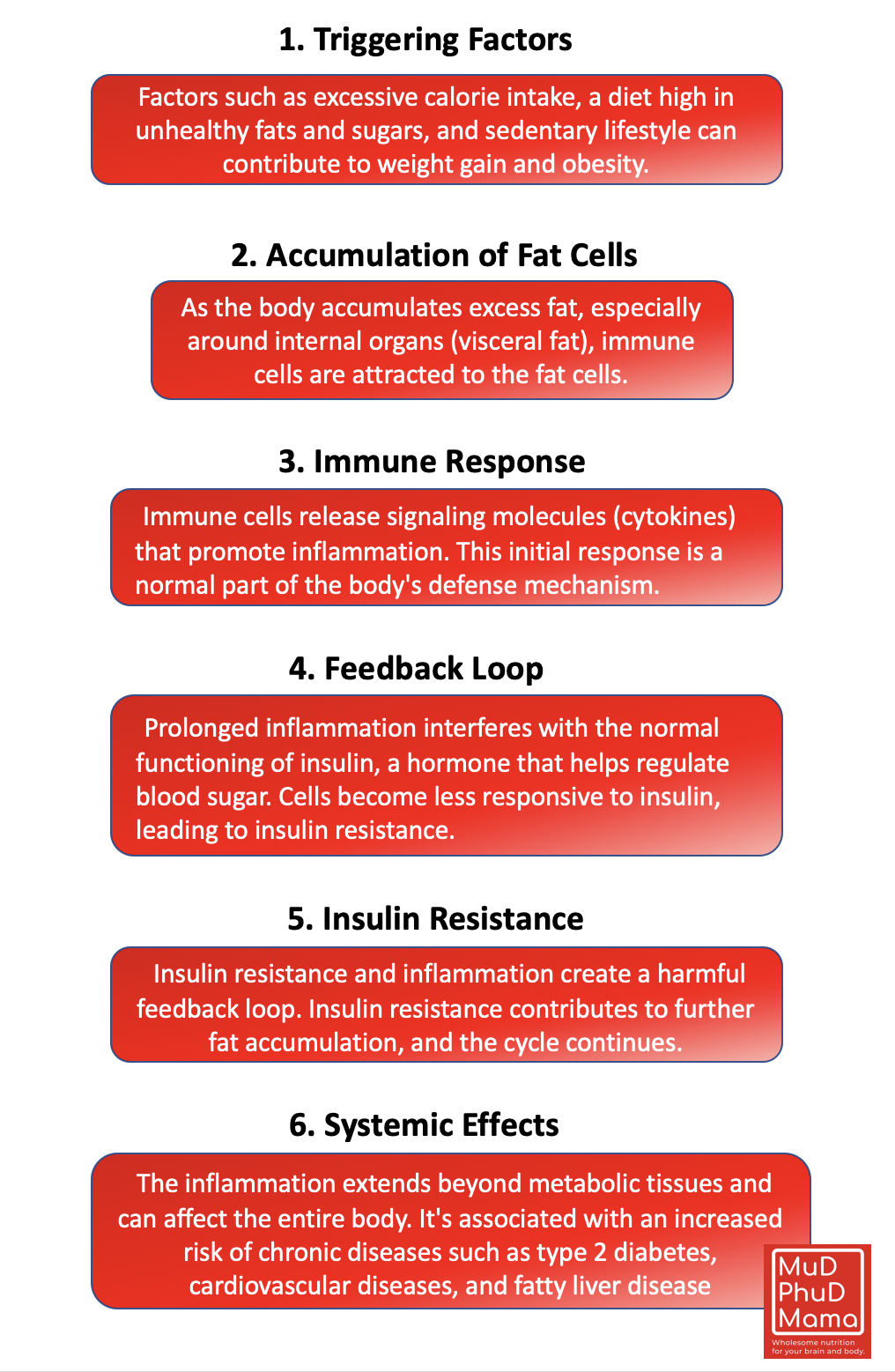
The Inflammatory Link: Understanding How Inflammation Causes Metabolic Disease
In recent years, the connection between inflammation and metabolic diseases has become a focal point of research (1), shedding light on the intricate relationship between our body’s immune response and metabolic health.
Inflammation is the body’s mechanism to fight off harmful things, such as injuries, infections, pathogens or irritants. Cells release a variety of signals that start an acute inflammatory response, including changes to vascular permeability (“leakiness” of blood vessels), with localized infiltration and accumulation of immune cells from the circulation. This is accompanied by the release of inflammatory mediators called cytokines, chemokines, and eicosanoids. This cascade of inflammation is followed by tissue remodeling and a repair process that restores tissue health. Usually, this inflammatory response is completed upon the elimination of the pathogens or after tissue repair. However, if the process is not appropriately terminated or it becomes uncontrolled in particular in tissues such as fat, the liver and muscle -it can lead to a maladaptive chronic inflammatory state that contributes to the development of metabolic diseases.
Chronic inflammation is known to be an underlying cause of several metabolic diseases, such as metabolic syndrome, type 1 and type 2 diabetes (T1D and T2D), non-alcoholic fatty liver disease (NAFLD), hypertension, cardiovascular disease (CVD), chronic kidney disease, as well as neurodegenerative, and autoimmune diseases.
Meta-Inflammation
The presence of low-grade inflammation in metabolic tissues so-called “meta-inflammation” is primarily caused by metabolic and nutrient excess and triggers immune cell infiltration and the secretion of inflammatory cytokines into the tissue environment, which then impairs glucose/sugar uptake and alters lipid metabolism.
Here is a step by step explanation of the process:

The cascade of chronic metabolic inflammation is a complex process involving interactions between immune cells, fat tissue, and metabolic organs that eventually leads in systemic metabolic dysfunction.
The Gut Microbiome
Interestingly, new research is implicating the role of gut bacteria in the process of meta-inflammation. An imbalance in gut bacteria, known as dysbiosis (2), can lead to the release of inflammatory byproducts that impact metabolic processes affecting organs like the liver, pancreas, and cardiovascular system.
Lifestyle factors such as a balanced diet, regular physical activity, and weight management play a crucial role in mitigating chronic metabolic inflammation and reducing associated health risks.
Conclusion
Understanding the role of inflammation in the development of metabolic diseases opens new avenues for therapeutic interventions. Lifestyle modifications, including a healthy diet, regular exercise, and stress management, can help mitigate chronic inflammation. Additionally, targeted therapies that modulate inflammatory pathways are under investigation as potential treatments for metabolic disorders. By understanding the interactions between inflammation and metabolism, we can break the inflammatory cycle, paving the way for improved metabolic health and a reduced burden of metabolic diseases in our communities.
